First-of-Its-Kind: How We Installed Polyurea Coatings on Commercial Floors and Walls
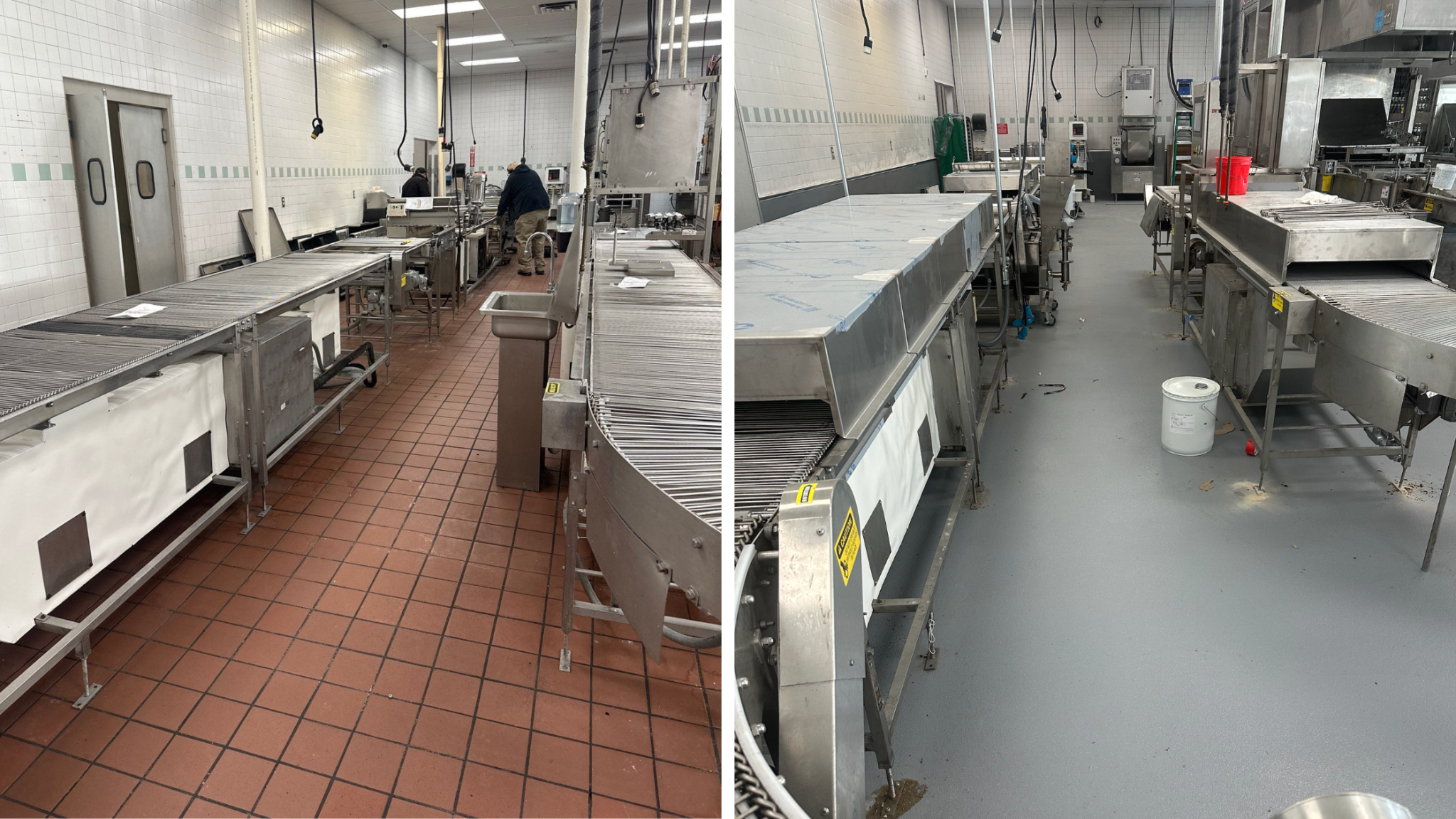
The Opportunity
When the request came in, “Can you apply polyurea on both floors and walls for a commercial space?”, we paused.
There were no playbooks. No case studies. No YouTube rabbit holes to fall into.
This hadn’t been done before. Not at this scale. Not with this spec.
But instead of saying no, we leaned in.
We gathered our team and decided: We’re going to build the process ourselves. We’ll train. We’ll test. We’ll document everything.
Fast forward a few months, and we successfully completed the first-ever large-scale commercial polyurea install covering both floors and walls, including demo, concrete pour, full spray, topcoat, and line striping.
Here’s exactly how we did it and what we learned along the way.
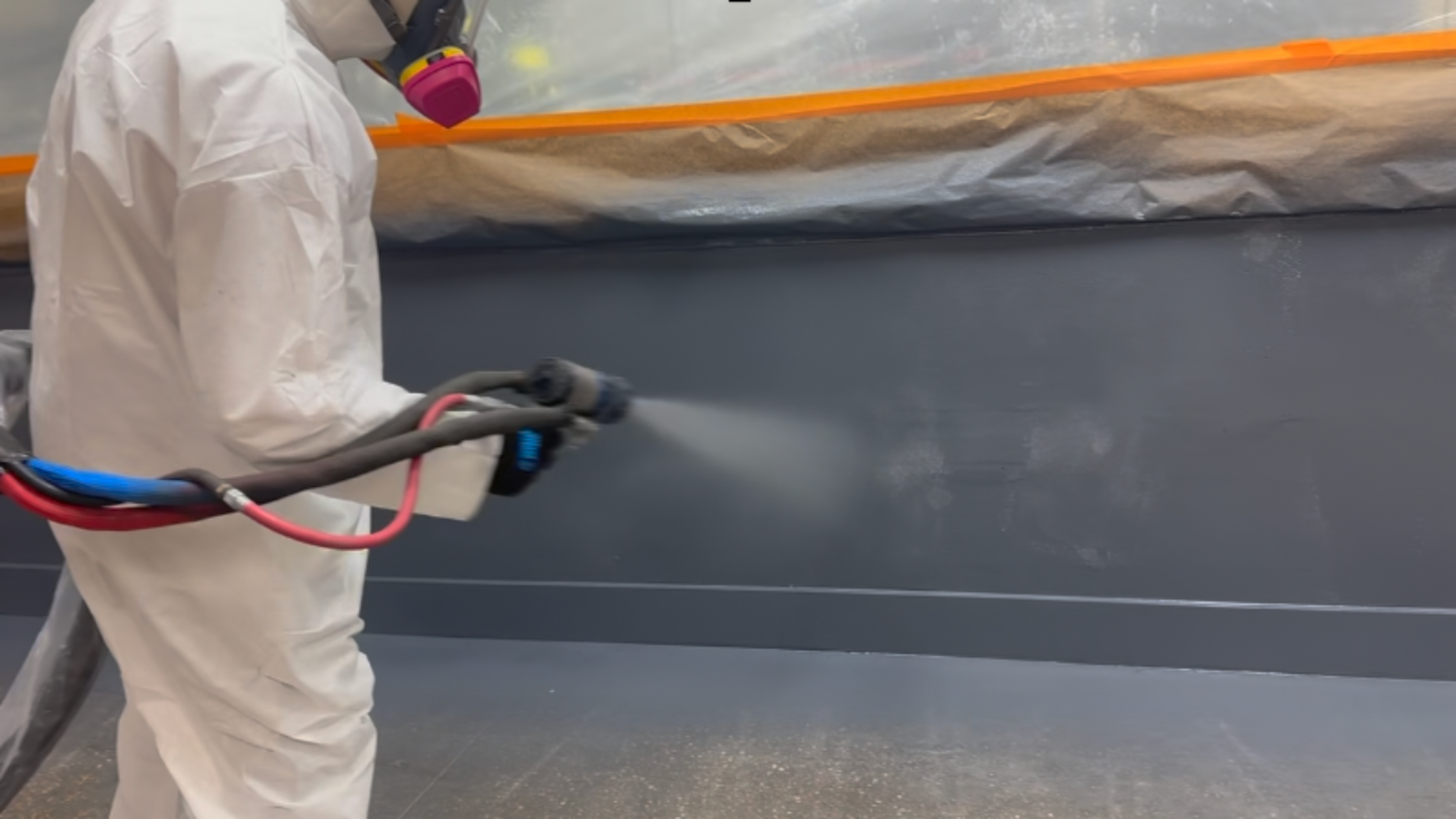
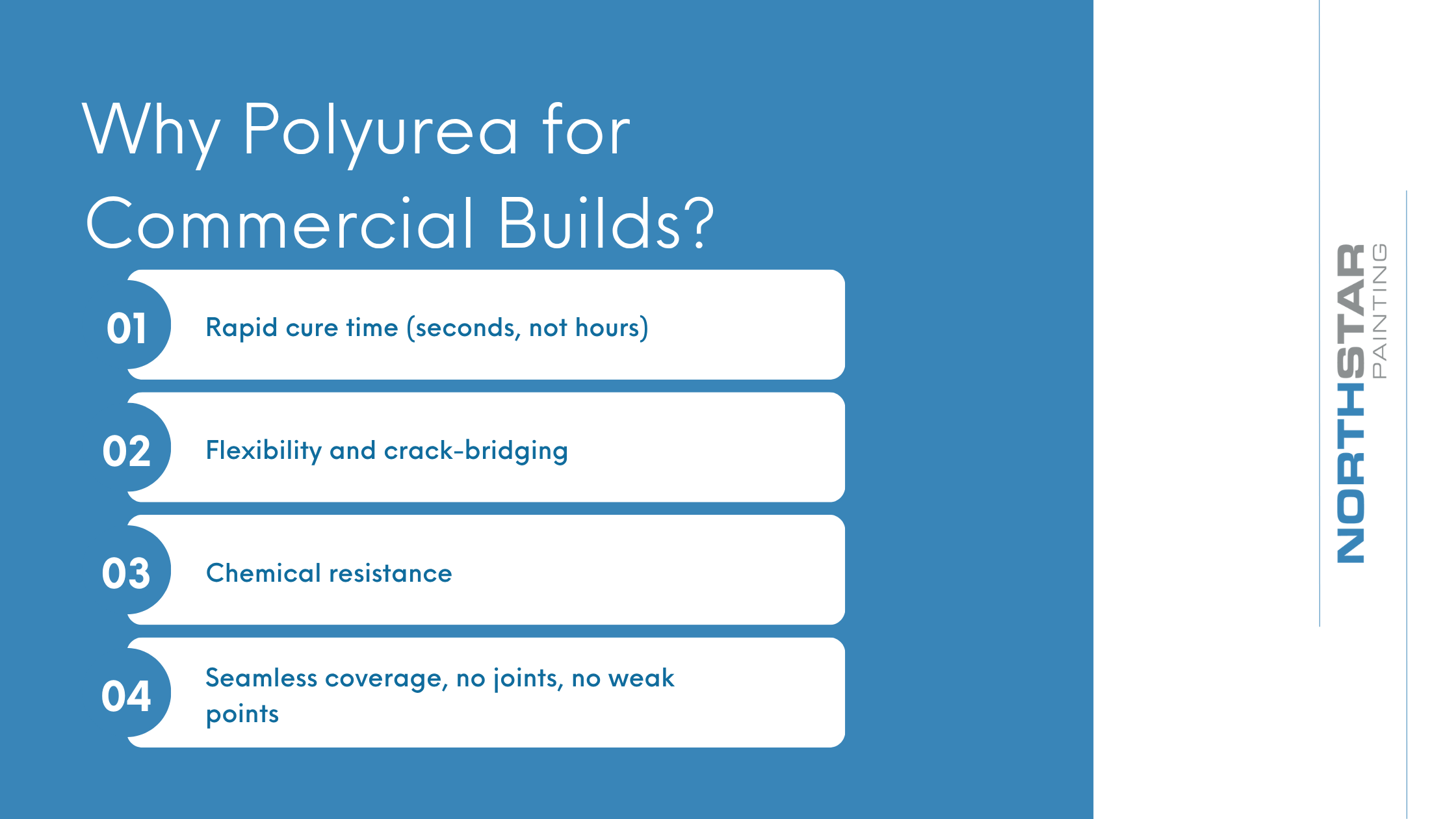
It’s often used in garages, truck beds, or containment tanks.
But on commercial floors and walls? That’s a new frontier.
Most commercial spaces still rely on outdated tile + mud-bed systems. These come with headaches: water seepage, cracking, and costly repairs. Polyurea offers a seamless, waterproof, ultra-durable solution… if it’s applied correctly.
That’s the kicker: there’s no manual for vertical application at scale.
So we wrote our own.
The Full End-to-End Process (What We Actually Did)
This wasn’t a touch-up. It was a gut-and-rebuild job, with precision from start to finish.
Here’s what our process looked like:
1. Demo Phase
Removal of all existing tile and mud-bed
Addressed surface imperfections and cleaned thoroughly
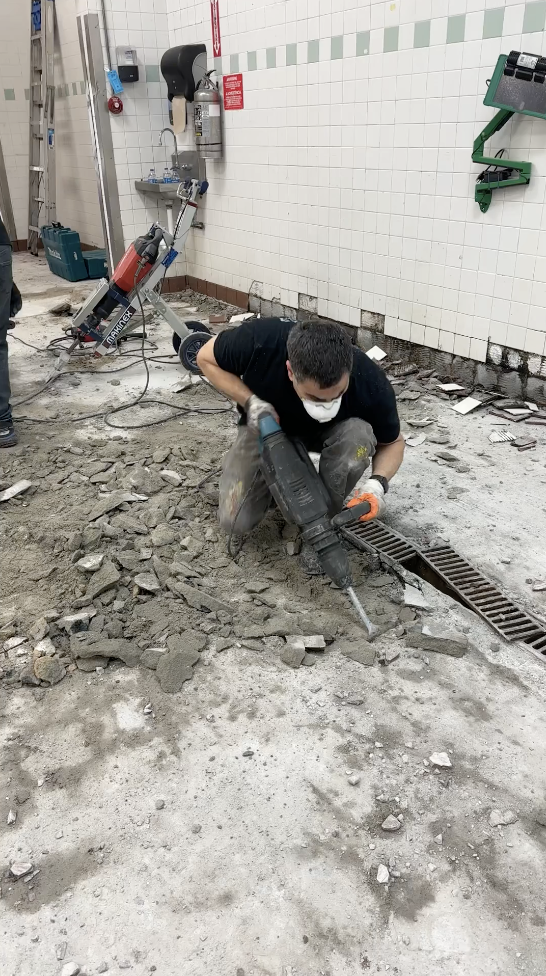
2. Concrete Pour
Fresh slab pour, laser-leveled to prep for coating
Proper cure and moisture testing before moving forward
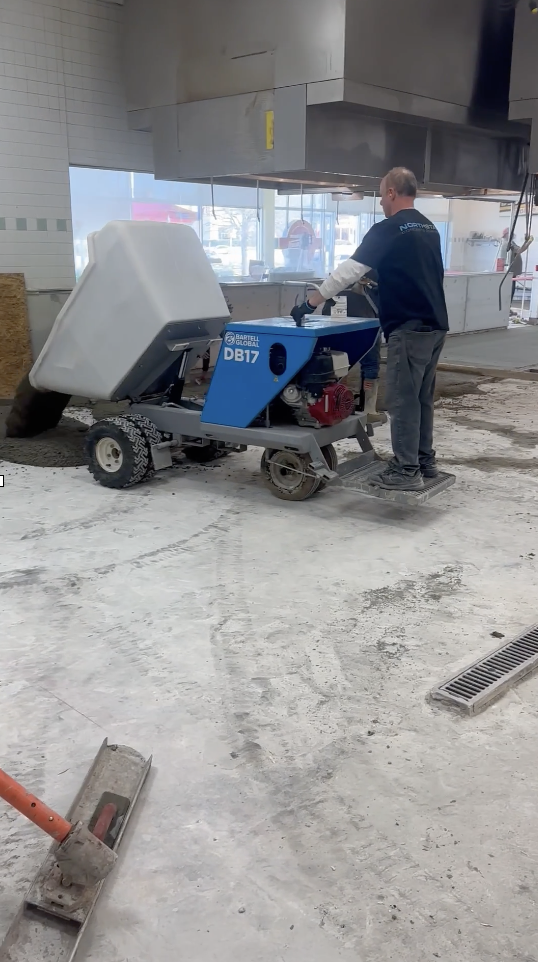
3. Polyurea Spray (Floors + Walls)
Special rig setup to handle vertical surfaces
Sprayed floor first, then walls in seamless transitions
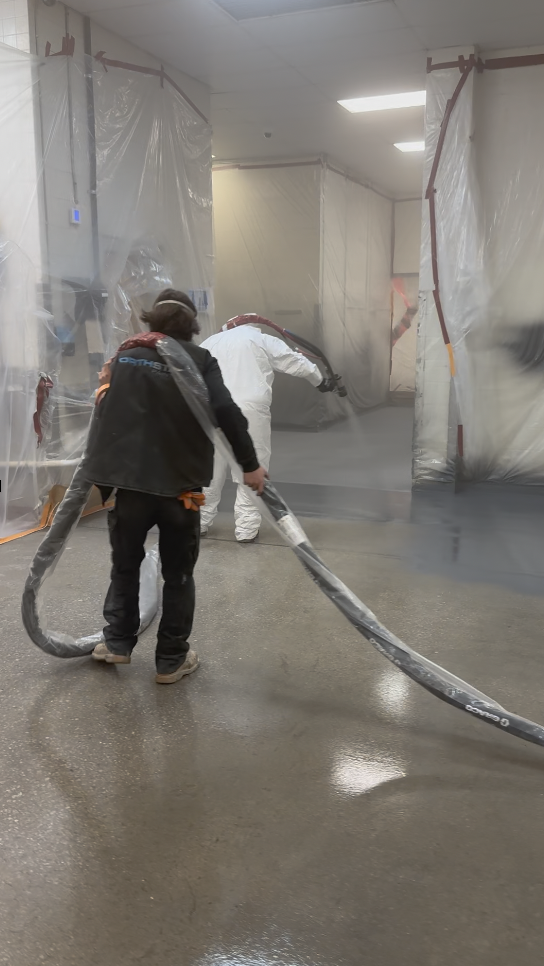
4. Topcoat Application
UV-stable aliphatic topcoat applied to lock in protection
Created a smooth, non-slip finish
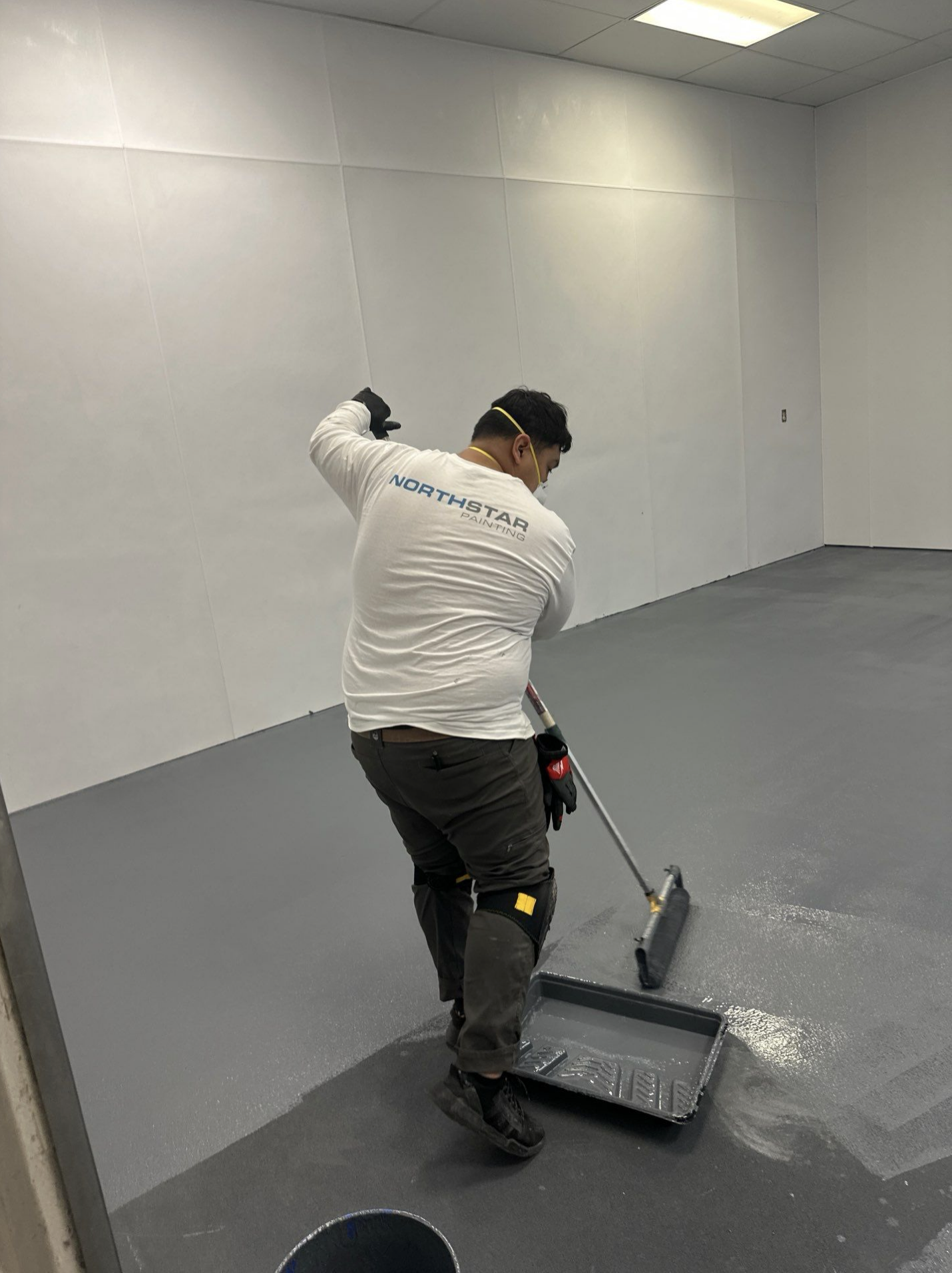
5. Line Striping
Final striping applied for zones, safety, and layout clarity
From demo to stripping every layer had to work as a system, not as standalone steps.
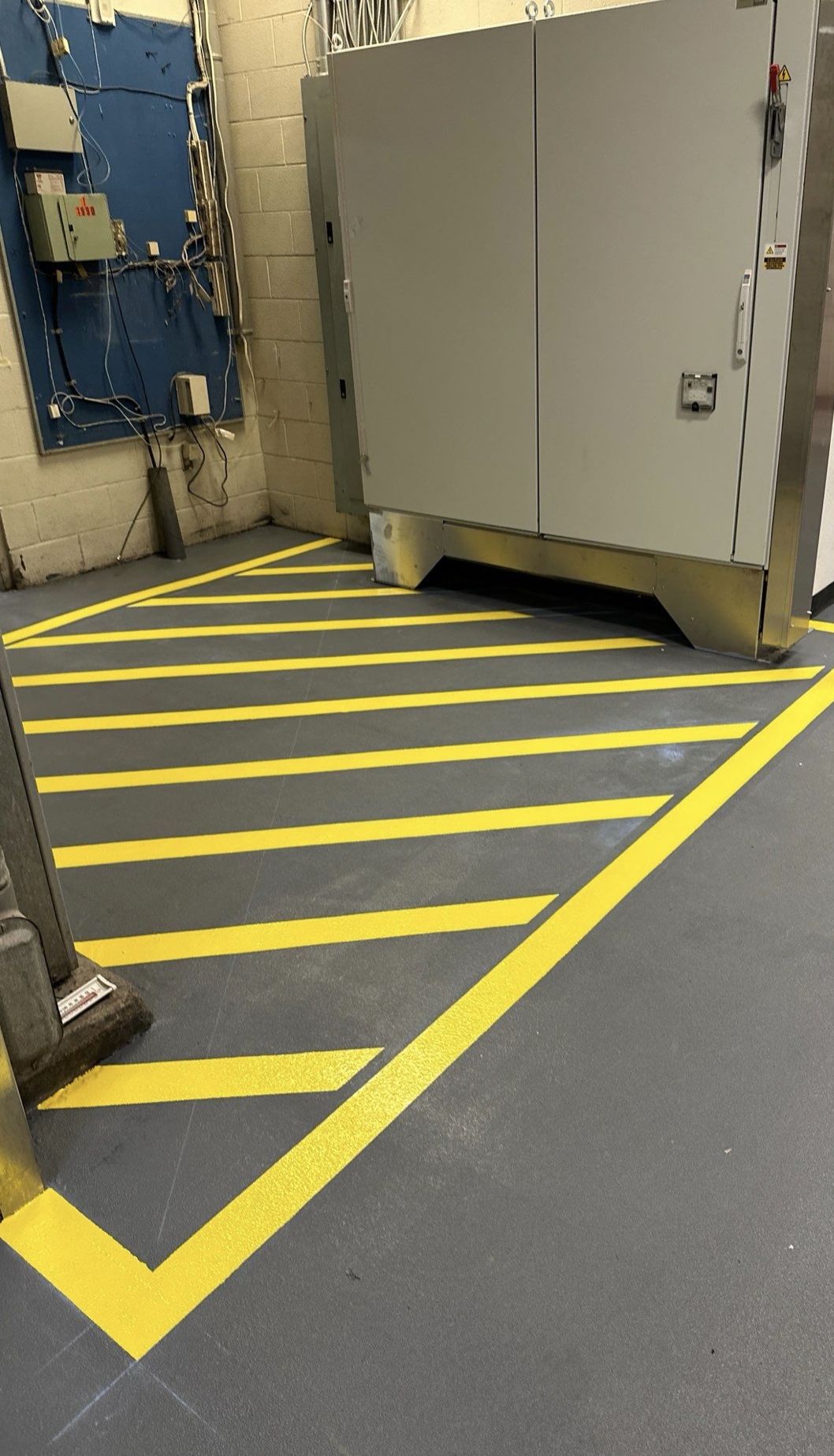
Training Our Crew
We didn’t subcontract this out. That would’ve been easier, but also riskier.
Instead, we committed to upskilling our team.
Here’s how we trained in-house:
Polyurea spray fundamentals: cure time, overlap, pressure balancing
Vertical spray trials: working with sag, nozzle control, and temp control
Safety training: PPE, ventilation, and equipment maintenance
By the time we got on-site, our team had muscle memory. They moved like they’d done this job 20 times already.
The Hardest Problems We Solved
No project worth doing is challenge-free. Here’s what tested us most:
- Vertical sag control
Polyurea wants to run when applied to walls. We dialed in exact temps and spray technique to combat sag.
- Fast cure = fast mistakes
Once sprayed, you get seconds to adjust. We had to be perfect the first time.
- Environmental control
Humidity, ventilation, and substrate temp all had to be in a tight window. We built a full checklist to stay dialed in.
- Line striping on polyurea
Paint doesn’t stick well to cured polyurea. We had to scuff surfaces and use specialty primers for adhesion.
What Made This a Success
Here’s what truly made the project bulletproof:
Prep work: every inch of substrate was clean, leveled, and dry
Training: our crew didn’t guess. They followed muscle memory
Sequencing: every step flowed into the next with zero downtime
Post-inspection: we passed the first time with no touch-ups needed
Considering Polyurea for Your Next Commercial Project?
If you're even thinking about polyurea, especially on walls or large surfaces, here’s what we recommend:
Plan beyond just floors: Polyurea excels when it can wrap up walls and create a true containment shell
Invest in prep: This isn’t paint. Your substrate must be perfect
Control your environment: Get serious about temp, humidity, and substrate moisture
Train or partner right: Don’t DIY unless your team is trained, or bring in pros who are
You don’t have to guess your way through a polyurea install.
We’ve done it. We’ll show you how.

